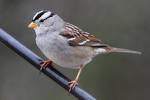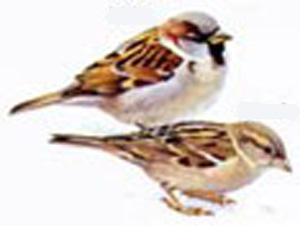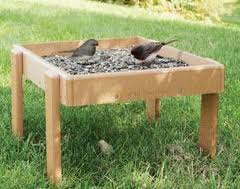Blog - General
Watch for More Native Sparrows

While writing this month’s newsletter I am keeping an eye open for any native sparrows that may appear in my backyard. It is beginning to be that time of year when they are on the move. I will soon become excited to see the heavily striped Song Sparrow, the bold black and white stripes on the head of a White Crowned Sparrow, the yellow lores on a White Throated Sparrow. Other native sparrows I expect to see in my yard as summer draws to a close and autumn arrives are the Harris’ Sparrow and American Tree Sparrow. And it won’t be long before we will start seeing the Juncos arrive from the north. Winter is far from our thoughts, but it is on the minds of many birds.
North America has many beautiful native sparrows and in the Great Plains we are blessed with many grassland sparrow species as well. Don’t confuse the species name sparrow with that of the House (English) Sparrow. The House Sparrow is not a true sparrow but a Weaver Finch that was introduced from Europe in the mid 1800’s and has become a menace to many of our native cavity nesting bird species.

The House Sparrow is non-native thus it is not federally protected. When I see a little brown bird foraging on the ground in my yard it is not the bird itself I notice first but how it is foraging on the ground for food. If the bird is scratching the ground with its feet, hopping, and hastily moving about it tells me it is a true sparrow, native to North America and needs more investigation to identify what species it is. House Sparrows on the other hand do not scratch the ground with their feet to turn up seeds but sweep with their bill instead. Keep an eye out for native sparrows arriving to spend the upcoming winter months or passing through during the fall bird migration. A little more on House (English) Sparrows
Keep a pair of binoculars along with your field guide ready and one eye on your backyard for any unusual bird that may appear.
Ground Feeders for Attracting Native Sparrows

Ground feeders supplied with either traditional white safflower seed or Nutra-Saff safflower seed (also referred to as golden safflower) and white Proso millet are excellent for attracting native sparrows who feed primarily on the ground. This combination of seed is perfect if you have marauding squirrels in your backyard as squirels will not eat safflower seed and really don’t bother with Proso millet much. In fact ground feeders work well for attracting many ground foraging birds. Even just a hand full of Proso millet scattered on the ground in the same manner that one would feed free roaming chickens can produce some exciting results. If you’re one of the fortunate few that do not have squirrels a quality general wild bird mix on your ground feeder is a good option.
More about Ground Feeders
Note: Ground feeders are excellent for using general wild bird mixes. However, if squirrels are present it is best to use safflower seed, or Nutra-Saff safflower seed with a little white Proso millet mixed in.
